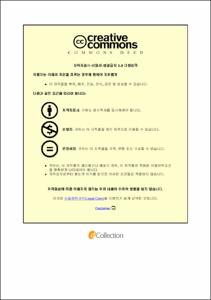Analysis of Trade Structure and the Impact of Exchange Rate Volatility on Exports from Mongolia to China
- Alternative Title
- 무역 구조 분석 및 환율 변동이 몽골에서 중국으로의 수출에 미치는 영향
- Abstract
- Mongolia-China economic and trade relations have experienced different stages of development along with changes in international political and economic relations. China has become Mongolia's largest trading partner and largest investor for more than a decade. Mongolia is rich in natural resources. Since 1996, it has attracted a large amount of foreign capital investment and a large number of raw material exports. Tugrik has depreciated faster. Therefore, the exchange rate has fluctuated significantly. China is Mongolia ’s largest trading partner, 90 percent of Mongolia ’s exports of raw materials go to China, and China mainly exports manufacturing products such as consumer goods and machinery goods go to Mongolia. The commodity structure of bilateral trade is relatively single. The exchange rate volatility will undoubtedly affect the bilateral trade between Mongolia and China. Therefore, studying the trade structure and the impact of bilateral exchange rate volatility between Mongolia and China will further promote economic cooperation between the two sides. Based on the previous research literature, the author analyzes at the industry level, making the bilateral trade structure and impact of exchange rate volatility more specific to product classification. The panel data from 1997 – 2017 and the top 20 industries ranked in total trade will be applied in the research. At the end of the paper, policy recommendations are contributed to the bilateral trade development between Mongolia and China.
국제 정치 경제 관계의 변화에 따라 중국 – 몽골경제 무역 관계는 다른 발전 단계를 거쳤다. 십여 년 동안 중국은 이미 몽골의 가장 큰 무역 파트너이자 가장 큰 투자국이 되었다. 몽골은 천연 자원이 풍부하며 1996 년 이후 많은 외국 자본 투자와 많은 원자재 수출을 유치했다. 중국은 몽골의 최대 무역 파트너이며 몽골 원료의 90 퍼센트가 중국으로 수출되는 반면, 몽골에 대한 중국의 주요 수출은 소비재 및 기계 제품과 같은 제조업 제품이고 양자 무역의 상품 구조는 비교적 단일하다. 각국의 통화 정책 개혁에 따라 환율 변동이 국제무역에 큰 영향을 미치고 있고 환율 변동이 중-몽 양자 무역에도 영향을 미칠 것이라는 점은 의심의 여지가 없다. 이에 따라 중-몽 양자간 무역 구조 및 환율 변동의 영향에 대한 연구는 양측의 경제 협력을 더욱 촉진할 것으로. 보인다. 선인 연구 문헌을 바탕으로 업종별로 분석해 양자 간 무역 구조와 환율 변동의 영향을 제품 분류까지 구체화했다. 연구에서는 1997-2017년의 패널 데이터와 무역 총액 상위 20개 업종을 응용할 것이다. 논문의 마지막에 중몽 양자 무역 발전에 기여하는 정책을 건의한다.
- Issued Date
- 2020
- Awarded Date
- 2020. 8
- Type
- Dissertation
- Keyword
- Bilateral Trade RCA Index TCI Index Exchange Rate Volatility Industry Level Analysis China – Mongolia
- Publisher
- Pukyong national university
- Alternative Author(s)
- 쉬궈딩
- Affiliation
- Pukyong National university, Graduate School
- Department
- 대학원 국제지역학과
- Advisor
- Utai Uprasen
- Table Of Contents
- I INTRODUCTION 1
1.1 Background of Mongolia – China bilateral trade 1
1.2 Objectives of the research and research questions 7
1.3 Structure of study 8
II MONGOLIA’S ECONOMY 10
2.1 Economic overview of Mongolia 10
2.2 Mongolia’s trading partners 19
III MONGOLIA-CHINA ECONOMIC RELATIONS 26
3.1 Introduction 26
3.2 The trade structure between Mongolia and China 37
3.3 Bilateral exchange rate 44
IV ANALYSIS OF TRADE STRUCTURE 49
4.1 Introduction 49
4.2 Literature review 49
4.3 Theoretical background 52
4.4 Methodology 54
4.4.1 Revealed comparative advantage index of China (1997-2017) 57
4.4.2 Revealed comparative advantage index of Mongolia (1997-2017) 59
4.4.3 The trade complementarity index between China's exports and Mongolia's imports 61
4.4.4 The trade complementarity index between China's imports and Mongolia's exports 63
4.5 Research findings 65
V ANALYSIS OF THE IMPACT OF EXCHANGE RATE VOLATILITY ON EXPORTS 67
5.1 Introduction 67
5.2 Literature review 69
5.3 Theoretical background 75
5.4 Research Methodology 77
5.4.1 Empirical model 78
5.4.2 Data description 82
5.4.3 Estimation results 87
5.5 Conclusion 97
VI CONCLUSION AND POLICY RECOMMENDATIONS 98
- Degree
- Master
- Files in This Item:
-
-
Download
 Analysis of Trade Structure and the Impact of Exchange Rate Volatility on Exports from Mongolia to C.pdf
기타 데이터 / 2.14 MB / Adobe PDF
Analysis of Trade Structure and the Impact of Exchange Rate Volatility on Exports from Mongolia to C.pdf
기타 데이터 / 2.14 MB / Adobe PDF
-
Items in Repository are protected by copyright, with all rights reserved, unless otherwise indicated.